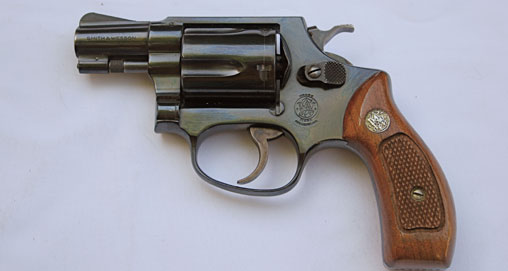
- #Smith & wesson model 36 serial numbers serial numbers#
- #Smith & wesson model 36 serial numbers serial number#
The mainspring is under tension from a screw in the low-front grip frame as on modern S&W revolvers. Lock of Smith & Wesson Model One Third variation with side plate removed.
#Smith & wesson model 36 serial numbers serial numbers#
There were approximately 110,000 2nd Issues produced from 1860 through 1868, with serial numbers ranging from approximately 12,000 (following the 1st Issue) through to approximately 120,000. 2nd Issue marked "2D QUAL'TY" are also seen occasionally.
#Smith & wesson model 36 serial numbers serial number#
There was also a decrease in the size of the barrel roll stamps at around serial number 95,000. Variants between serial numbers 12,000 through to about 20,000 involve the shape of the side plate ("straight" or "round"), the design of the trigger spring (flat spring, V spring or coil spring), and the number of patent dates on the cylinder (two or three). There are several variations of the 2nd Issue guns. Model 1 2nd Issues retain the flared, square cornered shaped grip and the octagonal tip-up style frame, and at first glance the two issues are easy to confuse. The profile of the frame is flatter (a likely concession for manufacturing efficiency), and the hammer is one piece.

The side plate on the 2nd Issue is much larger and irregularly shaped. The 2nd Issue of the Model 1 looks similar to the 1st Issue, with several notable differences. Serial numbers were issued sequentially for the Model 1 1st Issues ranging from 1 through approximately 12,000. In this article, Kountz noted specific differences in the recoil shield, the barrel latch (the first two variations used a dart style flat spring catch, while later variations used a larger bayonet release), the rifling and other subtle differences. There are six known variations of the Model 1, first identified in an article by John Kountz in the April 1956 issue of "The Gun Report". The features that easily distinguish the 1st issue are the flared, square cornered shaped grip (also seen in the 2nd Issue), the small round side plate, the round profile of the frame between the back of the cylinder and the grip, a split articulated hammer, and the flat spring barrel latch seen in some early variants. The 1st Issue of the Model 1 was the first major iteration (and the least common), with approximately 12,000 produced over a three-year period. The Model 1 had three issues or major variants, with each subsequent issue introducing significant technical changes.

It would become White's responsibility to defend his patent in any court cases which eventually led to his financial ruin, but was very advantageous for the new Smith & Wesson Company. Rather than make White a partner in their company, Smith and Wesson paid him a royalty of $0.25 on every "Model 1" revolver that they made. When they discovered that a former Colt employee named Rollin White held the patent for a "Bored-through" cylinder, a component needed for this new invention, the two partners approached White to manufacture a newly designed revolver-and-cartridge combination.

Wesson were researching a prototype for a metallic cartridge revolver. As Samuel Colt's patent on the revolver was set to expire in 1856, Horace Smith and Daniel B.


 0 kommentar(er)
0 kommentar(er)
